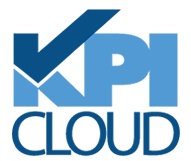by Prashanth Ashwathram
 Making a business intelligence (BI) project successful is a daunting task in itself not just because of the complexity and tools involved, but because it requires cooperation from different functional groups, multiple source systems, and gaining user acceptance from groups of users that are often resistant to change.
Making a business intelligence (BI) project successful is a daunting task in itself not just because of the complexity and tools involved, but because it requires cooperation from different functional groups, multiple source systems, and gaining user acceptance from groups of users that are often resistant to change.
The challenges add on further when the BI projects are planned to be executed in an onshore-offshore model. There are obviously many positives and benefits from this approach which can make this model a highly successful provided we follow some of the best practices.
Offshore Connectivity.
The onshore team typically starts a project before an offshore team becomes engaged in most BI projects for the purpose of requirements gathering, understanding the existing systems, project planning, etc. For the offshore team to be productive from day 1, all accounts and access priveldges must be setup, tested, and ready to go before they are set to start on the project. Being proactive in this area saves precious time and helps avoid wasting budgetary dollars.
Communication Protocols.
It is very important to have a proper communication channel setup between teams especially when they work out of different locations and time-zones. A single point of contact must be established between onshore and offshore teams to facilitate the hand-off of project tasks and deliverables on a day-to-day basis ensure for the smooth execution of a project.
Content Sharing.
Providing team access to all necessary documents and content increases productivity. Particularly when teams are working within different time-zones, precious amount of time is wasted in waiting for the information to be shared. An efficient process has to be setup at the inception of the project to share all important and necessary documents are available in a common shared location which can be easily accessible by onshore and offshore teams.
Business Context.
The productivity of the team also increases if they understand the value and context behind any new business requirements. It’s a good idea to help the offshore team understand the business context and impact the new requirements will have on the customers’ business. This will help the offshore team gain better insight into the client business which would result in accelerated deliverables, better performance, new innovative ideas, and higher rates of user adoption.
Overlapping Work Hours.
An overlapping work time is an option when the project timelines are critical and deadlines are close. This helps ensure a smooth hand-off and better collaboration efforts between the teams.
Staffing Ratio.
Another key aspect in determining the project success is the onshore-offshore staffing ratio. Each on-shore and off-shore team should be setup in an optimal way to best utilize their strenghts.
For instance, during the initial phase of a BI project, requirements gathering and design tasks are performed. These tasks better suited for a stronger onshore presence as it requires heavy user interactions.
During the later phases of the project that include development & testing, offshore teams can quickly scale to a large number to absorb the burden of development efforts.
Conclusion.
The success of any BI project is always measured by the level of user acceptance and return-on-investment (ROI) metrics. Both sets of success criteria can be successfully satisfied with a proper strategy to leverage the flexibility and scalability available within a "blended-shore" (onshore-offshore) model.
 |
Prashanth Ashwathram is a Senior Manager at KPI Partners and manages a team of business intelligence experts and enthusiasts at the KPI Offshore Technology Center. He is recognized as a seasoned business intelligence professional and has managed many successful projects for clients across various industries. Check out Prashanth's blog at KPIPartners.com. |



